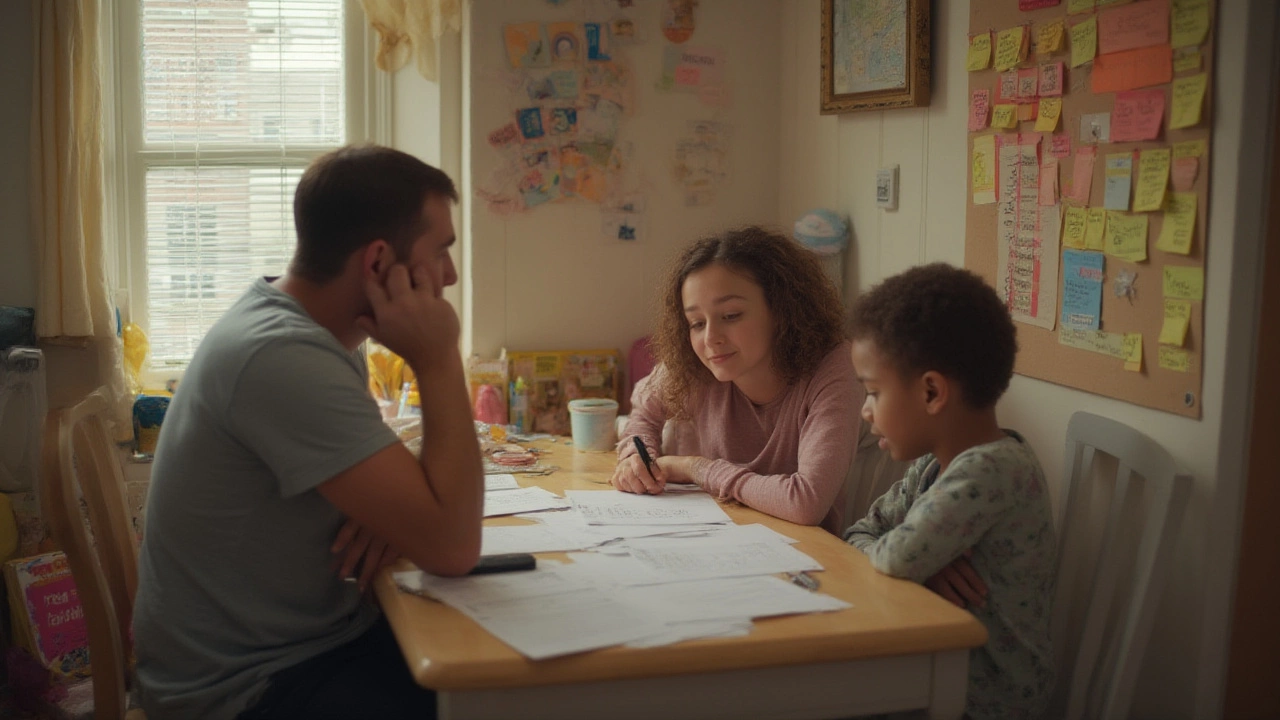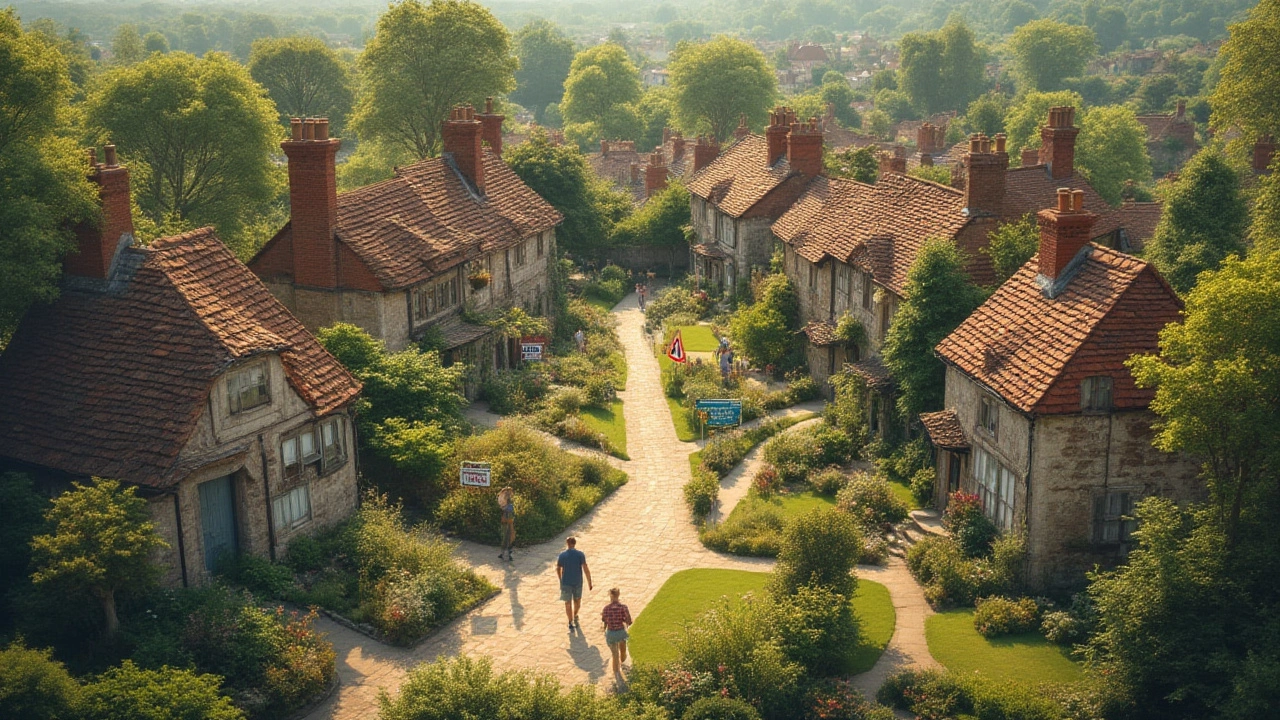If you’ve ever searched for a house and felt your chest tighten at every price tag, you’re not alone. There’s something wild about the idea of a house for the price of a used car—or less. Some corners of the internet are filled with stories of $1 homes, but does anyone actually get keys for that little? Somewhere between viral TikTok home tours and triple-digit mortgage payments, the truth gets lost. My own curiosity peaked one rainy Auckland afternoon while my spouse, Elliot, laughingly googled "buy a home for under $10,000." So what’s really possible when you ask: What is the lowest cost of a house? Is there real hope for the shoestring budget buyer, or is it all smoke and mirrors?
The Real Meaning Behind “Lowest Cost” for Houses
Before hunting for rock-bottom deals, you’ve got to define what “lowest cost” actually means. Are you buying the house itself, or does that price come with invisible extras—repair bills, legal fees, unpaid taxes, relocation costs? In some places, especially in the United States, you’ll spot headlines like “Homes from $1 in Detroit!” Sure, but only if your definition of ‘home’ includes no plumbing, missing windows, and a roof somewhere between questionable and catastrophic. The raw number is deceptive. What you really pay is a combination of upfront costs and the cash you pour in afterward.
Ask any local real estate agent: The ticket price isn’t everything. In New Zealand, for instance, it’s rare to find any kind of house—not a shed, not a hut, not even a home in the absolute middle of nowhere—for under $100,000 in 2025. But hop over to rural parts of the US Midwest or certain Eastern European villages, and sub-$20,000 houses pop up. It’s not just the money, either. Many low-priced houses sit on land with zoning headaches, remote locations (no power, no road access), or serious legal baggage.
And then there’s the flip side: Some ultra-cheap houses become cheap because nobody else wants them. Maybe there’s no job market or the local school closed down ages ago. That’s why cost of living factors—like insurance, council rates, or even just getting groceries—have to weigh into what you’re truly spending. It’s a game of trade-offs: Lower sticker price, bigger compromises elsewhere.
Cheapest Houses Around the World: Fact vs. Fiction
Let’s get the fantasies out of the way: There have always been legends about $1 or “almost free” houses. Italy’s infamous €1 homes got everyone excited a few years back, but here’s the fine print—buyers had to commit to expensive renovations and agreed to move in by a set date, with huge fines for breaking the contract. You can see a similar pattern in Japan, where aging population in rural areas created "akiya" (abandoned houses), some practically free if you manage repairs and paperwork. Yes, people do buy these homes, but transforming them isn’t as simple as a flashy headline suggests.
In the US, entire online databases like Zillow and Realtor.com let you filter for bargain-basement prices. In 2025, the actual lowest prices hover around $5,000 to $10,000—not for a full city home, but for dilapidated houses in towns with shrinking populations. Across Canada, you might stumble on old miner’s cottages or off-grid cabins for $20,000 or so, but almost always in isolated spots. In Australia, even the most modest outback shacks rarely dip below $60,000, mostly due to land costs and strict building standards.
I combed through sales data from PropertyShark, Australian Bureau of Statistics, and NZ House Price Index. The numbers don’t lie—outside of staged promotional events (like auctions with a $1 reserve), bargains more typically sit at 10-20% of the local median house value, and they’re almost always linked to major fixer-uppers. The rarest deals exist in economically depressed zones, or special government programs targeting population growth. There are absolutely ways to hunt them down, but you’ll put in months of research, paperwork, and possibly a small fortune in travel or repairs.
| Country | Lowest Verified Sale (2024-2025) | Typical Extras |
|---|---|---|
| United States | $5,450 (Detroit, MI) | Tens of thousands in repairs, property taxes owed, non-livable on purchase |
| Italy | €1 ($1.20, Sambuca) | Mandatory renovation investment (€20k+), deposit, residency conditions |
| Japan | ¥50,000 ($460, Shimane) | Major repairs, complex transfer, strict timeline |
| New Zealand | $105,000 (West Coast, South Island) | Isolation, repair, transportation challenges |
If you’re dreaming about that magic number, you’ll notice there’s always fine print. The upfront figure can be mind-blowingly low, but very few buyers are ready for the second wave of costs that usually triples or quadruples the investment. It’s key to read every listing (and every guarantee) like a detective, not a dreamer.

Hidden Costs and the Unexpected Truths of Buying Ultra-Cheap Homes
The sticker shock of a $2,000 or $10,000 house grabs anyone’s attention, but the real journey begins after that first handshake. Want an honest look at what comes next? Every super-cheap house has strings. Start by checking for unpaid council rates or property tax liens—sneaky debts often run higher than the sale price. Factor in building inspections. Some need total rewiring, new plumbing systems, or even structural repairs. Back in 2022, an Auckland couple bought a lakeside cabin in the North Island for “under $80,000" but spent over $120,000 restoring basics like insulation, water supply, and getting rid of invasive black mould. So the so-called bargain often turns into a full-scale renovation project.
Legal steps can be slippery, too. Many extreme bargains come from foreclosures or tax auctions. There’s rarely a warranty, and sometimes the original owner or government agency didn’t do a full handover—meaning disputes or even eviction battles. Plus, insurance premiums for decrepit houses or isolated properties are often twice the normal rate because of weather risks or fire hazards. Don’t forget about local zoning laws either. Some councils insist on immediate repairs, or even threaten heavy fines for leaving homes derelict.
Another hidden aspect is utilities and connectivity. Lots of super-cheap houses lack water, electricity, or sewer hookups—hooking those up might set you back five figures, and that’s if the nearest connection point isn’t miles away. Rural homes often mean higher transport costs, no high-speed internet, and long drives for essentials. Once, while looking at homes near Gisborne, a friend of mine found a place for $99,000—until she learned the nearest grocery store was an hour’s drive and the road washed out every winter. Cheap can morph into pricey with one bad storm.
Table: Hidden Costs to Expect
| Potential Cost Area | Likely Expense (Range) |
|---|---|
| Building Inspection | $400 - $2,000 |
| Major Repairs/Renovations | $10,000 - $80,000+ |
| Utility Connections | $5,000 - $40,000 |
| Unpaid Taxes/Liens | $1,500 - $30,000 |
| Insurance Premium (annually) | $1,200 - $5,000 |
This isn’t meant to scare you off low-price houses. Some people thrive on turning “ugly ducklings” into beautiful homes. But if you jump without budgeting for all the sneaky add-ons, that dream deal could drown you in costs you never saw coming.
Tips and Smart Strategies for Finding Budget-Friendly Homes
Ready to chase down that elusive ultra-cheap house? A few smart strategies (and some creativity) will help you go beyond wishful thinking into real results. The trick is to stop focusing on *just* the price and look instead for hidden opportunities—local grants for first-time buyers, properties sold by motivated sellers, or homes in areas about to get new infrastructure investment. Ask real estate agents about houses that didn’t sell and have been languishing for months; sellers may be desperate to accept a lower offer, especially if the house has quirks or cosmetic flaws.
Aim for alternative home types as well. Think tiny houses, relocatable buildings, or even modified garages. Construction costs in New Zealand have soared since the pandemic, but, for the truly determined, kitset homes or “as-is, where-is” auctions can edge the outlay closer to $120,000—often the bare minimum for legal dwellings in 2025. In the US or Europe, pre-fab homes and barndominiums have gained serious traction, opening up budget options in unlikely places. The mobile lifestyle is also trending, with more people investing in houseboats, tiny cabins, or even converted vans as a permanent home base.
Here’s the real nugget: A successful low-cost buy always requires meticulous research, relentless patience, and—let’s be real—a pretty sturdy sense of humor. Think outside big cities. Look into post-industrial towns undergoing regeneration, or rural areas with government incentives to attract young families. There’s magic in noticing what others overlook: weirdly shaped parcels of land, former shops or schools ripe for conversion, or auction properties that scare others off.
- Check newly listed properties daily and set up automated alerts for your price range.
- Get pre-approval for a mortgage to jump on deals fast, but be honest with your lender about the condition of the house to avoid nasty rejections during inspection.
- Contact local councils about derelict or abandoned houses—sometimes these never make it to online listings.
- Reach out to community Facebook groups or local bulletin boards for private sales not listed on the big property sites.
- Always factor in resale value. A house that’s dirt-cheap but impossible to sell isn’t a bargain; it’s a trap.
And when you’re almost ready to make an offer, rope in a trusted builder or inspector for honest guidance. Sometimes, a slightly pricier buy with fewer repairs will cost you far less over five or ten years than that irresistible fixer-upper with a rock-bottom price. Remember, location always matters: even the lowest cost of a house could wind up expensive if your commute turns into an odyssey or maintenance never ends. The wildest deals may make for great dinner stories, but homes that fit your real life win in the long run.
